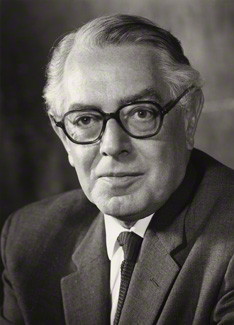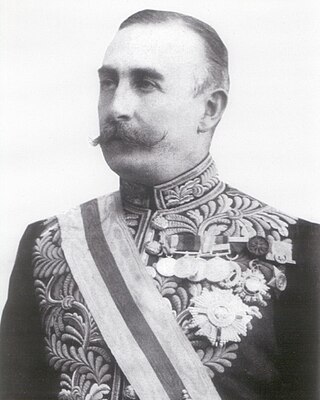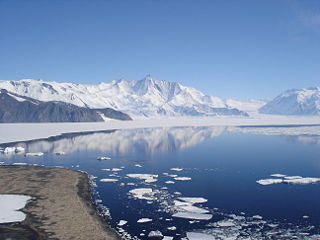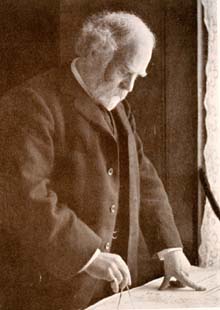
Edward Arthur Alexander Shackleton, Baron Shackleton, was a British geographer, Royal Air Force officer and Labour Party politician.

Gilbert Elliot-Murray-Kynynmound, 1st Earl of Minto,, known as Sir Gilbert Elliott, 4th Baronet until 1797, and The Lord Minto from 1797 to 1814, was a British diplomat and politician who sat in the House of Commons between 1776 and 1795. He was viceroy of the short-lived Anglo-Corsican Kingdom from 1793 to 1796 and went on to become Governor-General of India between July 1807 and 1813.

Gilbert John Elliot-Murray-Kynynmound, 4th Earl of Minto,, known as Viscount Melgund by courtesy from 1859 to 1891, was a British peer and politician who served as Governor General of Canada, the eighth since Canadian Confederation, and as Viceroy and Governor-General of India, the country's 17th.

Sir Roderick Impey Murchison, 1st Baronet, was a Scottish geologist who served as director-general of the British Geological Survey from 1855 until his death in 1871. He is noted for investigating and describing the Silurian, Devonian and Permian systems.

Earl of Minto, in the County of Roxburgh, is a title in the Peerage of the United Kingdom. It was created in 1813 for Gilbert Elliot-Murray-Kynynmound, 1st Baron Minto. The current earl is Gilbert Timothy George Lariston Elliot-Murray-Kynynmound, 7th Earl of Minto.

The Admiralty Mountains is a large group of high mountains and individually named ranges and ridges in northeastern Victoria Land, Antarctica. This mountain group is bounded by the Ross Sea, the Southern Ocean, and by the Dennistoun, Ebbe, and Tucker glaciers. The mountain range is situated on the Pennell Coast, a portion of Antarctica lying between Cape Williams and Cape Adare.

Southampton is a community on the shores of Lake Huron in Bruce County, Ontario, Canada. It is close to Port Elgin and is located at the mouth of the Saugeen River in the Saugeen Ojibway Nation Territory. The size of the town is 6.44 square kilometres. The permanent population in 2016 was 3,678, but the summer population is higher since cottagers and campers spend vacation time in the area.

Sir John Murray was a pioneering Canadian-born Scottish oceanographer, marine biologist and limnologist. He is considered to be the father of modern oceanography.

HMS Terror was a specialised warship and a newly developed bomb vessel constructed for the Royal Navy in 1813. She participated in several battles of the War of 1812, including the Battle of Baltimore with the bombardment of Fort McHenry. She was converted into a polar exploration ship two decades later, and participated in George Back's Arctic expedition of 1836–1837, the successful Ross expedition to the Antarctic of 1839 to 1843, and Sir John Franklin's ill-fated attempt to force the Northwest Passage in 1845, during which she was lost with all hands along with HMS Erebus.

Jervis Inlet is one of the principal inlets of the British Columbia Coast, about 95 km (59 mi) northwest of Vancouver, and the third of such inlets north of the 49th parallel, the first of which is Burrard Inlet, Vancouver's harbour.

Palmerston is an unincorporated community in the south end of the town of Minto, in the north part of Wellington County, in Ontario, Canada.

John Minto IV was an American pioneer born in Wylam, England. He was a prominent sheep farmer in the U.S. state of Oregon and a four-time Republican representative in the state legislature. Minto also volunteered for the militia during the Cayuse War and years later helped locate Minto and Santiam passes through the Cascade Mountains east of Salem, Oregon.

Captain George Comer was considered the most famous American whaling captain of Hudson Bay, and the world's foremost authority on Hudson Bay Inuit in the early 20th century.
The Minto Islands are a Canadian Arctic island group in the Nunavut Territory. The islands lie in the western portion of Queen Maud Gulf, between Kent Peninsula on Nunavut's mainland, and Melbourne Island. Back Point, Victoria Island is approximately 47.9 km (29.8 mi) to the north.

The Bell Peninsula is located on southeastern Southampton Island, in the Kivalliq Region, Nunavut, Canada. It is in close proximity to the small Inuit community of Coral Harbour. The southern shores make up the northern boundary of Hudson Bay. Foxe Basin is to the east. There are several large bays surrounding the peninsula. Bowhead whale frequent the area. The Bell Peninsula's irregular coastline is marked by five distinct points, some of which have notable archaeological sites. Mount Minto, in the north, is the highest peak. The Back Peninsula is on the eastern end of the Bell Peninsula.
In Canada, a number of sites and structures are named for royal individuals, whether a member of the past French royal family, British royal family, or present Canadian royal family thus reflecting the country's status as a constitutional monarchy under the Canadian Crown. Those who married into the royal family are indicated by an asterisk (*). Charles Edward Stuart was a pretender to the British throne.
The Baillie Islands are located off the north coast of Cape Bathurst in the Northwest Territories, Canada. The islands formed part of the area used by the Avvaqmiut who are a branch of the Inuvialuit.
In Canada, a number of sites and structures are named for Governors General of the country, the Canadian monarch's representative in the country.
Edward Nicholas "Ned" Kendall, R.N. was an English hydrographer, an officer in the Royal Navy, and polar explorer. During one of his Arctic expeditions, Kendall became the first known European to sight Wollaston Land.















